Subtotal: ₹699.00
-40%
Washed Cinder for Plants Online: Great for Roses, Cactus, Succulents, Adenium and Bonsai. For DIY Potting Soil Mixes -Available 1 kg to 100 kg
Rated 5.00 out of 5 based on 3 customer ratings
(3 customer reviews)
₹120.00 – ₹2,499.00
Buy Best Quality Washed cinder for plants online: Suitable for use in home and indoor gardens, roses, cactus, bonsai, succulents & DIY potting soil mixes in particle sizes ranging from 1 mm to 25 mm. Perfect for natural root aeration. Available in 500 grams to 25 kg packs. Organic Cinder for succulents which is double washed.
SKU: N/A
Categories: Succulents & Cacti, Aquarium, Garden Decor, Soil Amendments, Terrariums & Fish Tanks
Tags: alternative of coal cinder for planting, buy cinder for plants, buy cinders india plant media, buy cinders plant media, cinder, cinder block garden shelves, cinder coal power plant, cinder for plants, cinder for plants india, cinder for plants online, cinder for plants online india, cinder for rose plants, cinder material, cinder meaning, cinder meaning in bengali, cinder meaning in hindi, cinder meaning in malayalam, cinder meaning in punjabi, cinder rose plant, cinder thermal power plant, coal cinder for plants, coal cinders garden, define cinder, gardening cinder, gardening cinder india, gardening cinder stones india, gardening cinders dealers in bangalore, how to make a cinder block succulent garden, how to plant roses in cinder, is cinder lighter than garden soil, planting flowers in cinder blocks, planting tomatoes in cinder blocks, rose plant in cinder, volcanic lava rock cinders plant media, what is cinder, what is the meaning of cinder, where to buy cinder for garden
Washed Cinder for Plants: Great for Roses, Cactus, Bonsai, Succulents & DIY Potting Soil Mixes – 1 kg to 100 kg Online
Washed cinder (Grey Volcanic Cinder) is a very versatile and beneficial product that is produced using Volcanic Rocks which are lightweight and highly porous. Grey Cinder is great for plant enthusiasts and has gained popularity for its multiple uses in rose, succulent, cactus, and home & terrace gardening.
From providing perfect aeration for plant roots to improving drainage in potting soil mixes, washed cinder is a go-to item for those looking to enhance their plant care routines.
What are the benefits of using washed cinder? Can Cinder be used for different plant varieties? How to choose the right type and size for specific plant needs? What are some essential tips for its effective incorporation into potting mixes???
Let us give you answers to these in an organized manner….
What is Washed Cinder and its Benefits for Plants?
Redefine Your Garden with Natural Cinder for Succulents, Cacti, Roses, and More…
Washed cinder, also known as Volcanic Cinder / Grey Cinder / Cinder Rock or Cinder Grit, is a natural mineral material made from larger porous volcanic rocks. It has been washed several times to remove impurities, making it suitable for various gardening applications.
One of the key benefits of using washed cinder in plant care is its ability to provide optimal aeration for plant roots, promoting healthy growth and preventing root rot. The graded granules of washed cinder provide perfect aeration and drainage required for successful plant development and hence it is an ideal choice for roses, cactus, bonsai, and perfectly suitable for succulents.
How does washed cinder improve aeration for plant roots?
In potting mixes for roses and bonsai, cinder effectively enhances drainage, preventing waterlogging and potential root rot. By improving and maintaining proper water movement through the soil along with aiding in the removal of excess moisture content, washed cinder ensures that these plants receive the necessary optimal moisture while maintaining healthy root systems.
What are the benefits of using washed cinder in potting soil mixes for roses and succulents?
Roses and succulents (although they are from different plant families) tend to thrive in well-draining soil and washed cinder plays a crucial role in maintaining ideal growing conditions. By enhancing drainage and preventing water retention, washed cinder helps to protect rose, succulent and cactus plant varieties from root rot and fungal infections. Additionally, the natural mineral composition of washed cinder promotes healthy root systems, leading to vigorous growth and vibrant blooms. The pores in each cinder particle ensures nutrition retention for a longer period of time, providing any fertilizer a naturally slo
How to use washed cinder effectively in DIY potting mixes for bonsai and cactus?
Washed Cinder can be used for a variety of DIY Potting Mixes like:
- Bonsai
- Cactus
- Succulents
- Adenium
- Roses
- Indoor House Plants
It’s important to consider the unique needs of these plants, weather conditions, sunlight and watering requirements. The uses of various particle sizes are mentioned in the images above.
In general all these plant varieties have a requirement for well-aerated and fast-draining soil. By combining washed cinder with other essential components such as vermicompost, leaf mould, bio manure, PROM or Pumice Chunks, gardeners can create a well-balanced potting mix that supports the specific growth requirements while ensuring proper aeration, nutrition retention and moisture control.
Choosing the Right Size Cinder for Different Plants
Understanding the suitable granule size and quantity for different plant types, is crucial for successful plant care. While washed cinder is suitable for a wide range of plants, it’s essential to consider the specific requirements of each type when selecting the appropriate product. All these details are mentioned in the infographics for specific available particle sizes.
Cinder for Succulents, Cactus and Adeniums: What makes washed cinder ideal for Adeniums, Succulents and Cacti?
Adeniums, Succulents and cacti plants thrive in a dry, well-drained soil, and cinder provides the perfect growing medium to meet these requirements. The porous nature of washed cinder granules allows excess water to easily drain away, preventing the risk of overwatering and root rot.
Watering is the most aspect in the plant care of these varieties. Cinder minimizes any risk of over watering as well as retains the unused nutrition from fertilizers reducing their overall use in plants with a cinder based potting medium.
How to select the appropriate size of washed cinder granules for different plants in India?
The size of washed cinder granules can significantly impact their suitability for different plants. While larger granules, typically around 10 to 15 mm, are well-suited for improving drainage and aeration in larger pots, specifically in the base layer and the top layer.
For outdoor garden beds as well, Cinder upto 1 to 2 inches is a popular choice. Granules in the range of 2-4 mm and 6 to 10 mm are more suitable for Cactus, Succulents, Adeniums and Roses.
For indoor potted plants and containers, 1 to 2 mm is a correct size that can be used upto 50% in the total potting mix. By choosing the right granule size, gardeners can ensure optimal performance of cinder in their specific plant varieties in various setups.
What quantity of washed cinder is recommended for various plant types?
For plants that prefer drier conditions, a higher proportion of volcanic cinder can be used to enhance drainage, while plants needing more moisture may benefit from a smaller quantity of cinder to maintain the necessary balance of water retention and aeration.
How do we incorporate Cinder into Potting Mixes
Here are the General Uses and proportions of Cinder with other potting media for different plant varieties.
- 100% Cinder Based Potting Mix – Many professional growers use potting media made entirely of cinder for their mother plants.
-
80% Cinder + 20% Organic Manure or Compost – For home gardening, it’s common to use a potting mix that’s 80% cinder and 20% organic manure or compost, especially for ornamental plants. The type of compost or manure can vary depending on the plant. For succulents, cactus, and adenium, leaf mold fertilizer is preferred. For houseplants, vermicompost or aged cow manure can be used.
- 50% Cinder + 30% Existing Soil + 20% Manure – When transplanting a plant to a larger pot because it has outgrown its current one, a common ratio is to use 50% cinder, 30% existing soil, and 20% manure. This helps ensure the plant has the right mix of materials for healthy growth in its new environment.
What are the essential components to combine with washed cinder for a well-balanced potting mix?
To create a balanced potting mix, we can combine cinder with components like vermicompost, bio potash, leaf mold, dolomite, rock phosphate, and pumice. These are commonly used alongside volcanic cinder to support various plants.
The cinder base provides lightweight, well-draining soil, while vermicompost or organic fertilizers supply essential nutrients. When mixed properly these components create a nutrient-rich medium that promotes healthy plant growth.
How does washed cinder improve drainage in potting soil for adenium and bonsai?
Washed cinder enhances drainage in potting soil mixes for roses and bonsai by creating air pockets within the soil. When mixed in soil, the cinder particles create gaps that allow excess water to drain away more efficiently. This prevents waterlogging, which can lead to root rot and other issues for adenium and bonsai plants.
Additionally, washed cinder helps to loosen the soil structure, promoting better aeration. Improved aeration ensures that the roots receive an adequate oxygen supply, which is essential for healthy root development and overall plant growth. This combination of enhanced drainage and improved aeration provided by washed cinder creates optimal growing conditions for adenium and bonsai plants, leading to healthier and more robust growth.
What type of fertilizer works best when using washed cinder in potting mixes?
When we use washed volcanic cinder as part of potting mixes, it is essential to choose a suitable fertilizer is important to provide the necessary nutrients for plant growth.
Organic fertilizers, such as vermicompost, leaf mould or natural mineral-based options, are well-suited for use with cinder, as they complement the natural properties of the cinder and support healthy root development without the risk of chemical buildup in the soil.
When using Cinder Media, you can cut down on fertilizer amounts because Cinder holds nutrients longer. Plus, with Cinder-based soil, any fertilizer you use naturally becomes slow-release, unless you apply it directly to the leaves. So, less fertilizer goes a longer way with Cinder, making plant care simpler and more efficient.
Buying Guide: Finding the Best Washed Cinder for Your Plants
Premium 500grams, 1kg to 25kg Packaging for Granule sizes ranging from 1 mm to 25 mm. Ideal for various types of Potting Mix
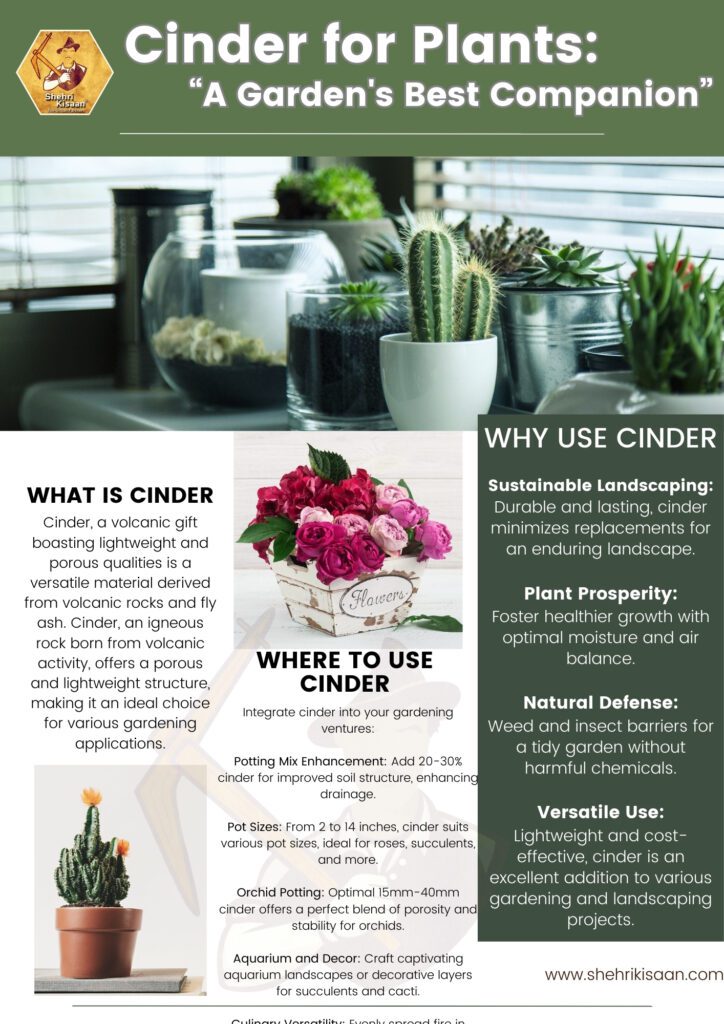
When purchasing washed cinder for gardening purposes, considering various factors such as quality, price, and packaging details is crucial to ensure that the product meets the specific needs of the plants being cultivated. Additionally, understanding the relationship between price and quality, as well as the available shipping options, is important for making informed purchasing decisions.
What factors to consider when purchasing washed cinder for gardening purposes?
Before buying washed cinder, gardeners should consider factors such as the granule size, mineral composition, and suitability for specific plant types. This ensures that the washed cinder selected aligns with the unique requirements of the plants being grown, leading to successful and thriving garden setups.
How does the price of washed cinder products relate to their quality and suitability for plants?
While price can be indicative of the quality of washed cinder products, it’s essential to consider the overall value offered in terms of the product’s performance and suitability for plant care. By evaluating the price in relation to factors such as purity, granule consistency, and proven success in plant growth, gardeners can make informed choices that prioritize both quality and affordability.
What are the shipping options and packaging details for buying washed cinder in various quantities?
When planning to purchase washed cinder, exploring the available shipping options and understanding the packaging details for different quantities is essential for a smooth and successful purchasing experience. Factors such as free delivery, protective packaging to prevent damage in transit, and the convenience of receiving the item in suitable packaging sizes are important considerations for a hassle-free shopping process.
Tips and Tricks for Using Washed Cinder in Plant Care
Beyond its fundamental benefits in providing aeration and drainage, washed cinder offers additional advantages when used in specific plant care routines. Understanding how to leverage washed cinder to enhance the care of adenium, roses, and various plants, along with incorporating the cinder into natural and organic care practices, is key to achieving optimal results in plant growth and maintenance.
How to provide optimum aeration and drainage for adenium using washed cinder?
Adenium, also known as desert rose, requires well-drained soil to prevent root rot and ensure successful growth. By incorporating washed cinder into the potting mix, gardeners can ensure optimum aeration and drainage, creating the ideal conditions for healthy adenium development. This helps to protect the plant from common issues such as waterlogging and assists in promoting robust root systems.
What is the best way to incorporate washed cinder into natural and organic rose care routines?
For gardeners seeking to adopt natural and organic care practices for roses, incorporating washed cinder into their care routines can yield numerous benefits. The use of washed cinder in soil mixes for roses helps to prevent water stagnation, thereby reducing the risk of root rot and fungal infections. Additionally, the mineral composition of washed cinder contributes to healthy root development and overall plant vigor, aligning with natural care principles.
How does washed cinder help in promoting healthy root development in various plants?
By maintaining optimal aeration and facilitating effective drainage, washed cinder plays a critical role in promoting healthy root development across a wide range of plants. Its ability to prevent waterlogged conditions, provide essential air circulation to roots, and safeguard against issues such as root rot contributes to robust root systems and overall plant vitality. Incorporating washed cinder into plant care routines supports the long-term health and growth of diverse plant species.
Cinder for Plants Growth – Available Sizes and their respective uses:
Cinder 1-2 mm:
- Germination: Cinder of this size provides an excellent substrate for seed germination, offering optimal moisture retention and aeration.
- Leafy Vegetables: It’s a perfect medium for cultivating leafy vegetables.
- Hanging and Vertical Gardening: Cinder’s lightweight nature makes it an excellent choice for hanging and vertical gardens.
- Potting Mix Enhancement: Incorporating 20% to 30% cinder into your soil potting mix can improve drainage and aeration.
Cinder 2-4 mm:
- Ideal Pot Size: Best suited for 4 to 8-inch pots.
- Plant Variety: Suitable for a wide range of plants, including roses, adenium, sansevieria, succulents, cacti, tropical plants, seasonal flowers, and both indoor and outdoor plants.
- Potting Mix Enhancement: Similar to smaller cinder sizes, it can be added to potting mix to enhance soil structure.
Cinder 6-10 mm:
- Pot Size: Perfect for 8 to 14-inch pots.
- Plant Variety: Versatile and suitable for roses, adenium, sansevieria, succulents, cacti, tropical plants, seasonal flowers, vegetables, and fruit plants.
- Layering Method: Export nurseries often use this cinder layering method, allowing you to layer different sizes as per your pot’s requirements.
Cinder 15mm – 50mm (1/2 to 2 inches – further segregated into 1/2 to 1 inch and 1 to 2 inches):
- Orchid Potting: Ideal for orchid plant potting due to its porous nature.
- Base Layer: An excellent alternative to brick or mud pot pieces, retaining nutrients within pots for extended periods.
- Decorative Top Layer: Adds an attractive touch to succulents, cacti, and dish trays.
Large Cinder Sizes – (Lava Rocks 2-6 inches, further segregated into 2-4 inches and 4-6 inches):
- Aquarium Decoration: If you plan to use cinder for aquarium decor, please inform us, and we’ll provide sinking rocks suitable for this purpose.
- Plant Ornamentation: Enhance the aesthetics of bonsai, miniature gardens, dish trays, and exhibition plants with these larger cinder sizes.
FAQs People Also Ask (with short answers)
Q. Are you a wholesale manufacturer of cinder products?
A. Yes, we proudly offer Cinder at wholesale prices. As a trusted manufacturer, we at Shehri Kisaan ensure high-quality products in bulk quantities to meet your gardening and landscaping needs.
Q. How can I purchase Cinder at wholesale prices near me? Do you have authorized dealers specializing in wholesale bulk quantities?
A. We have a network of authorized dealers across India who cater to wholesale bulk quantities of Cinder. Simply reach out to us on WhatsApp and we shall provide you with our trusted dealers near you, and they will be more than happy to provide you with premium cinder products at competitive wholesale prices. Enhance your gardening and landscaping projects with our top-quality Cinder solutions.
Q. Is cinder suitable for all types of plants?
A. While cinder can be used for a wide range of plants, it is particularly beneficial for low-maintenance and low-water plants, as well as those with a preference for well-draining soil, such as succulents, cacti, and certain orchids. The porous nature of cinder helps prevent root rot in such plants.
Q. How does cinder compare to other growing media such as soil or peat moss?
A. Unlike traditional potting soil or peat moss, cinder is graded for usage based on its particle size, which ensures better drainage and aeration for plant roots. Its lightweight nature also makes it an excellent choice for planters and pots, especially in situations where weight is a concern.
Q. Will cinder alter the color of plant leaves?
A. No, using cinder as a growing medium will not affect the color of plant leaves. However, it is important to monitor the moisture levels, as cinder may appear brown when it is dry and black when wet. This can help in determining the right watering schedule for the plants.
Q: Do I need to clean cinder before using it for plants?
A: It’s a good idea to clean cinder before using it for plants. But with Shehri Kisaan Cinder, you don’t have to worry about washing it because it’s already been washed and is ready to use. However, it’s still a good idea to rinse the cinder thoroughly to remove any dust or particles that may have collected during transportation. This helps ensure good drainage and airflow for your plants.
Q: Can I reuse or recycle cinder for plants?
A: Yes, you can use cinder again and again for your plants.
Do check out our Cactus and Succulent Plant Food, Specially crafted as a fertilizer for Cacti and Succulents.
For More Details on Cinder, do check out our educational site Shehri Kisaan Blogs
| weight | 450g, 950g, 1900g, 5KG, 10KG, 20KG |
|---|---|
| size | 1-2 mm, 2-4 mm, 4-6 mm, 6-10 mm, 1/2-1 Inch, 1-2 inches |
3 reviews for Washed Cinder for Plants Online: Great for Roses, Cactus, Succulents, Adenium and Bonsai. For DIY Potting Soil Mixes -Available 1 kg to 100 kg
Add a review Cancel reply

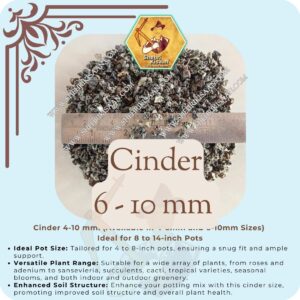
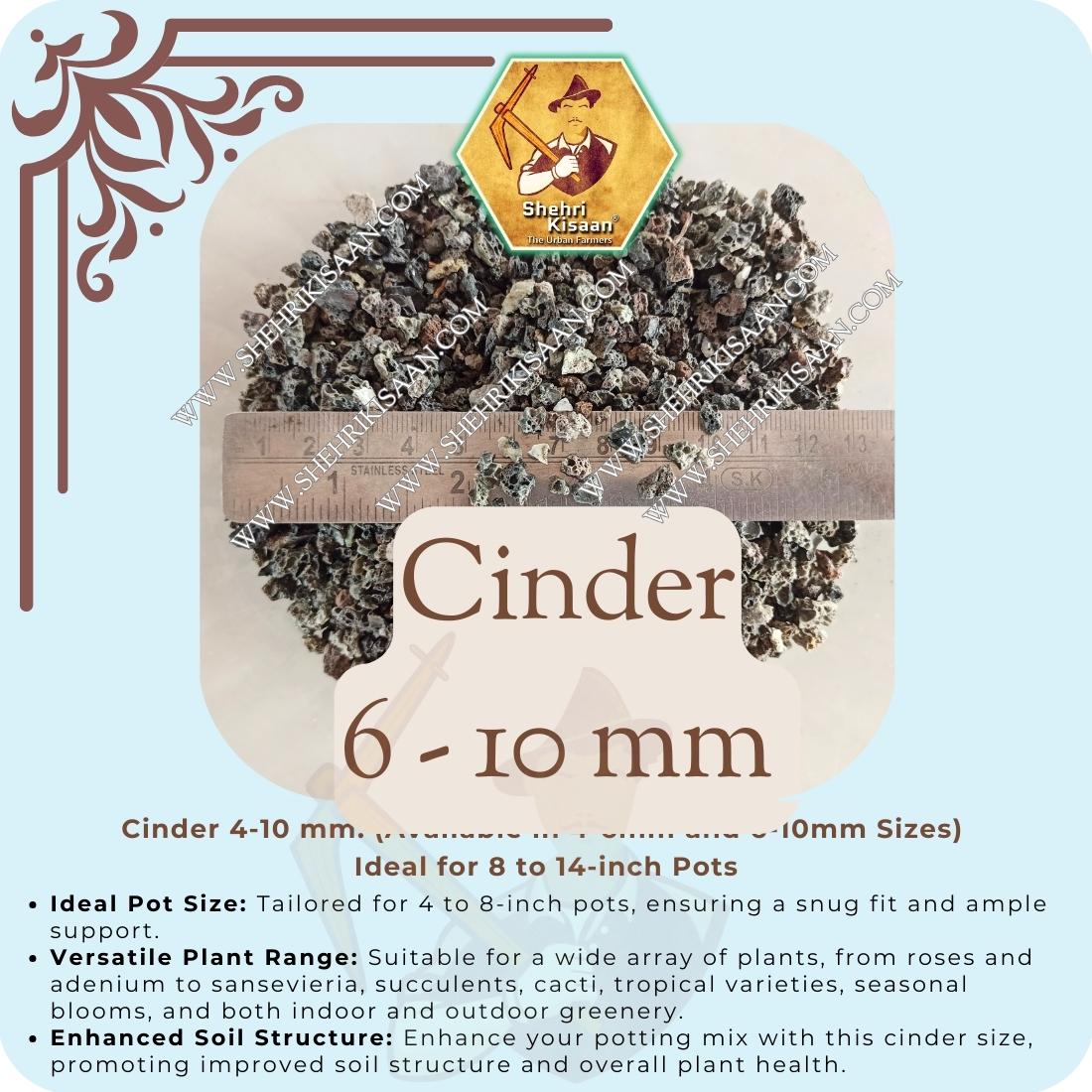
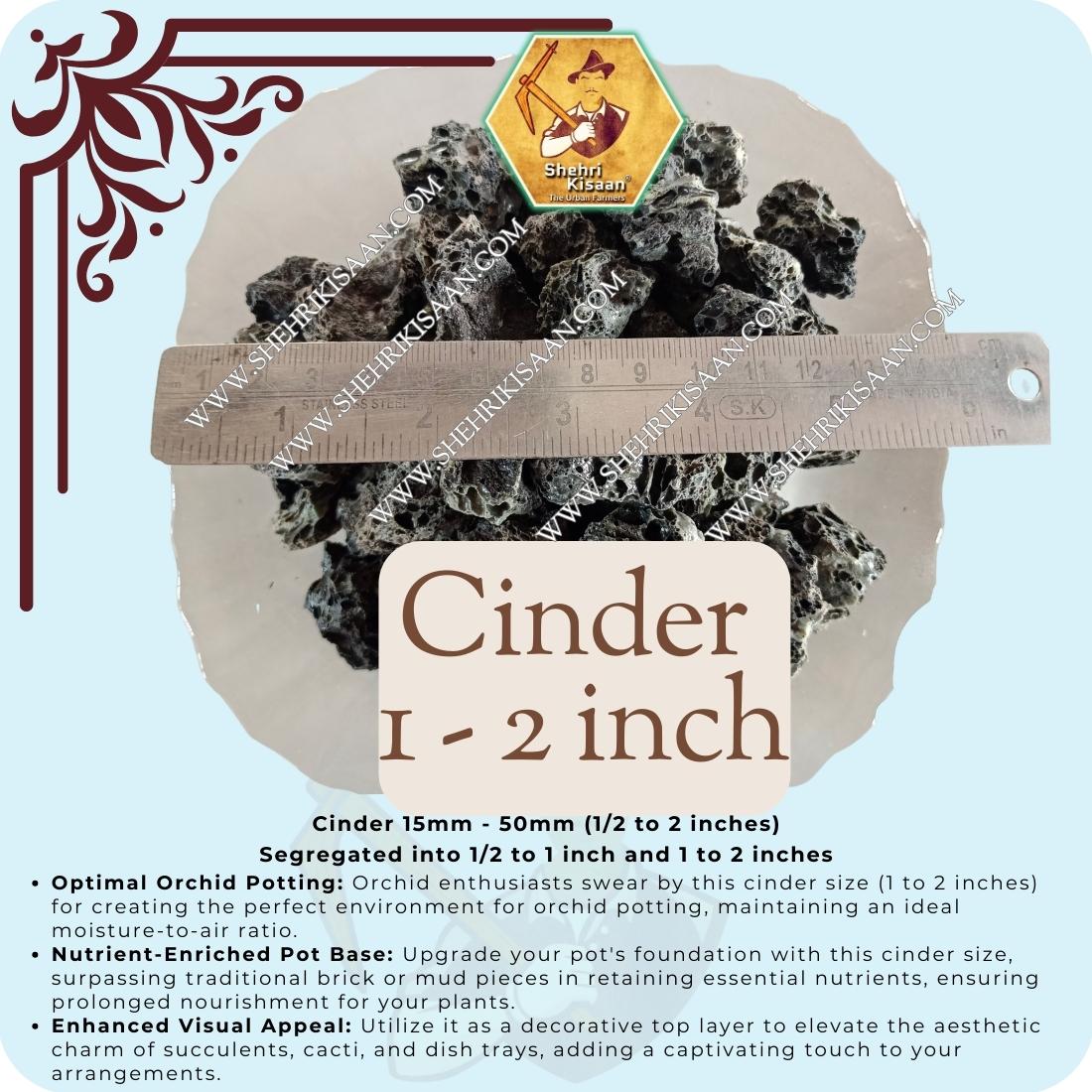
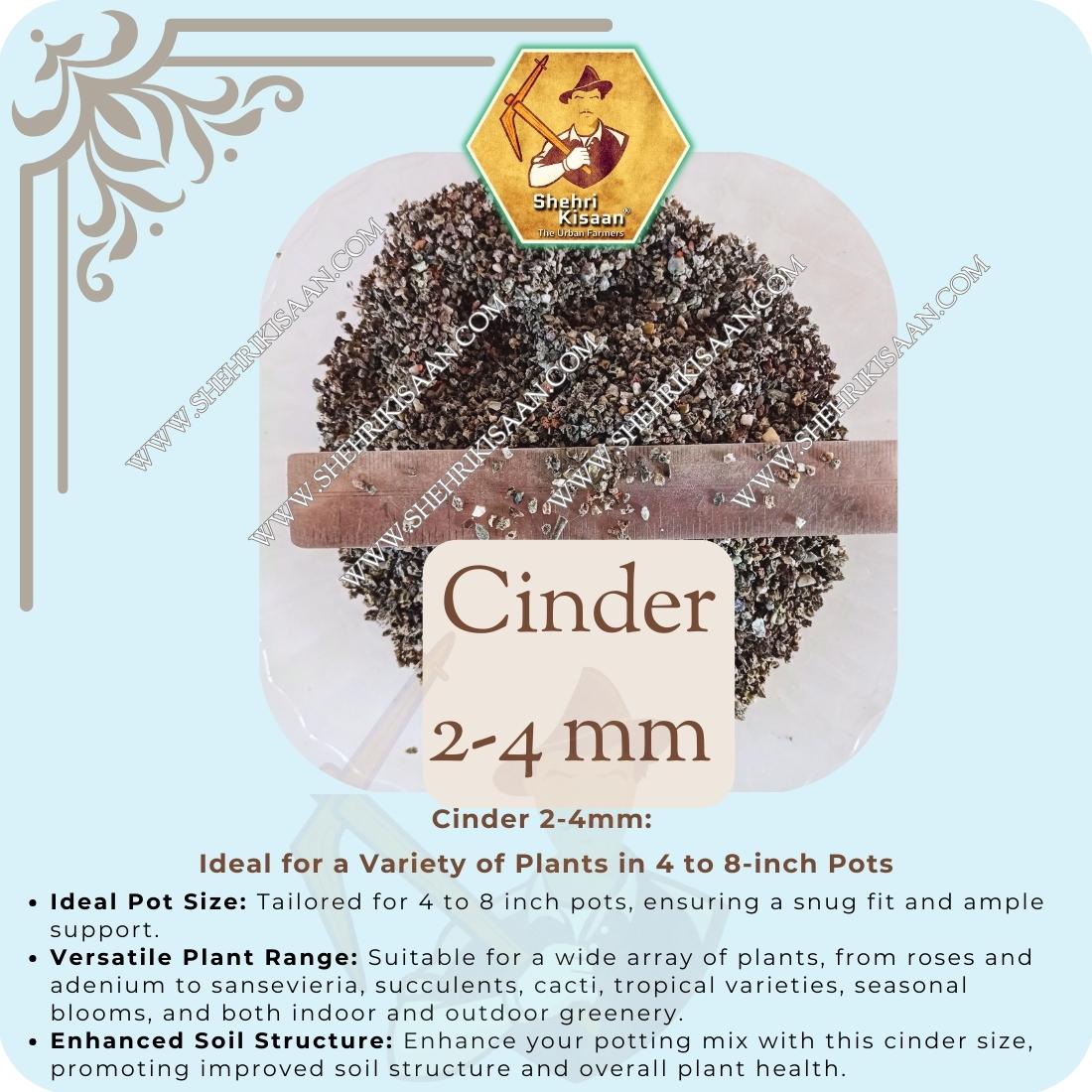
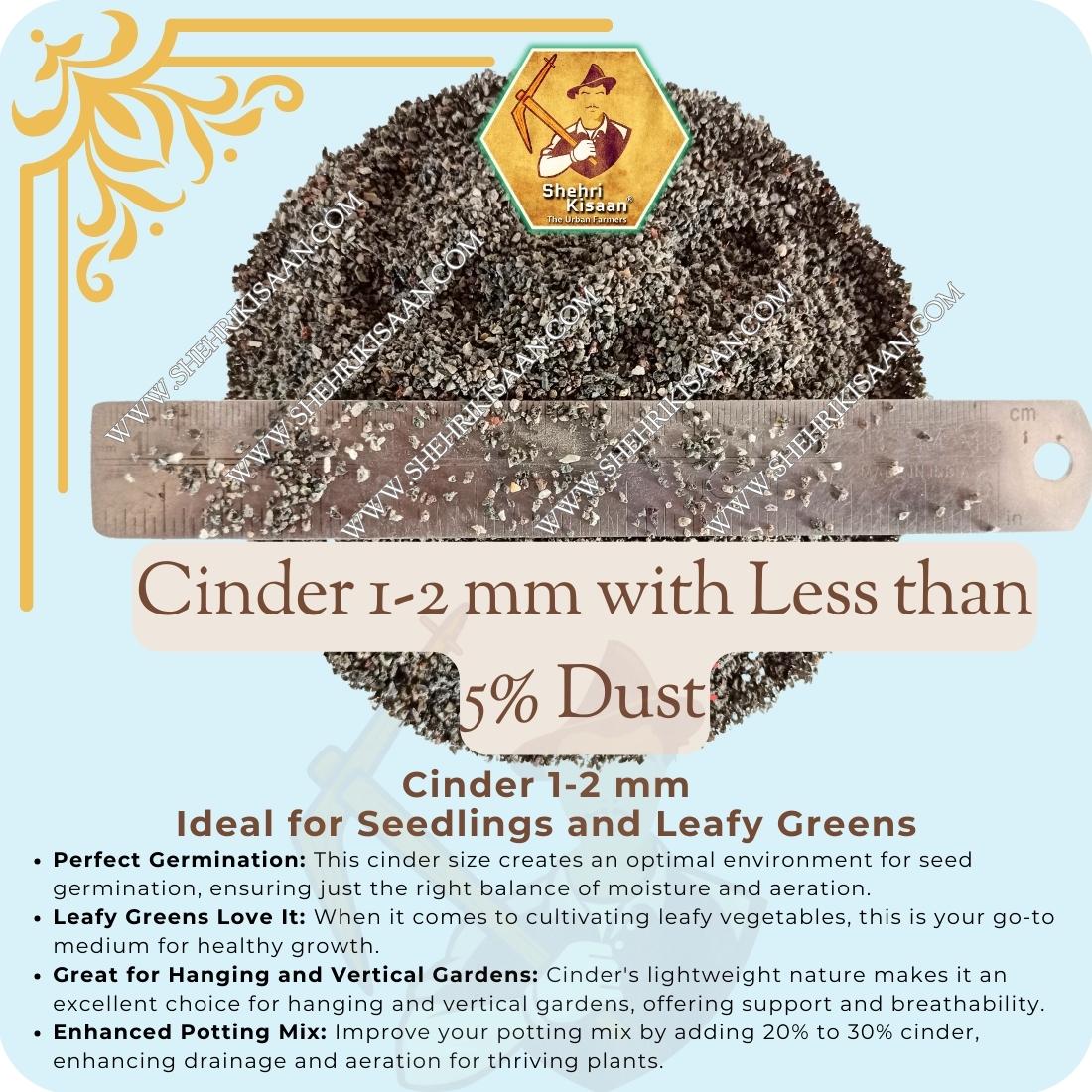
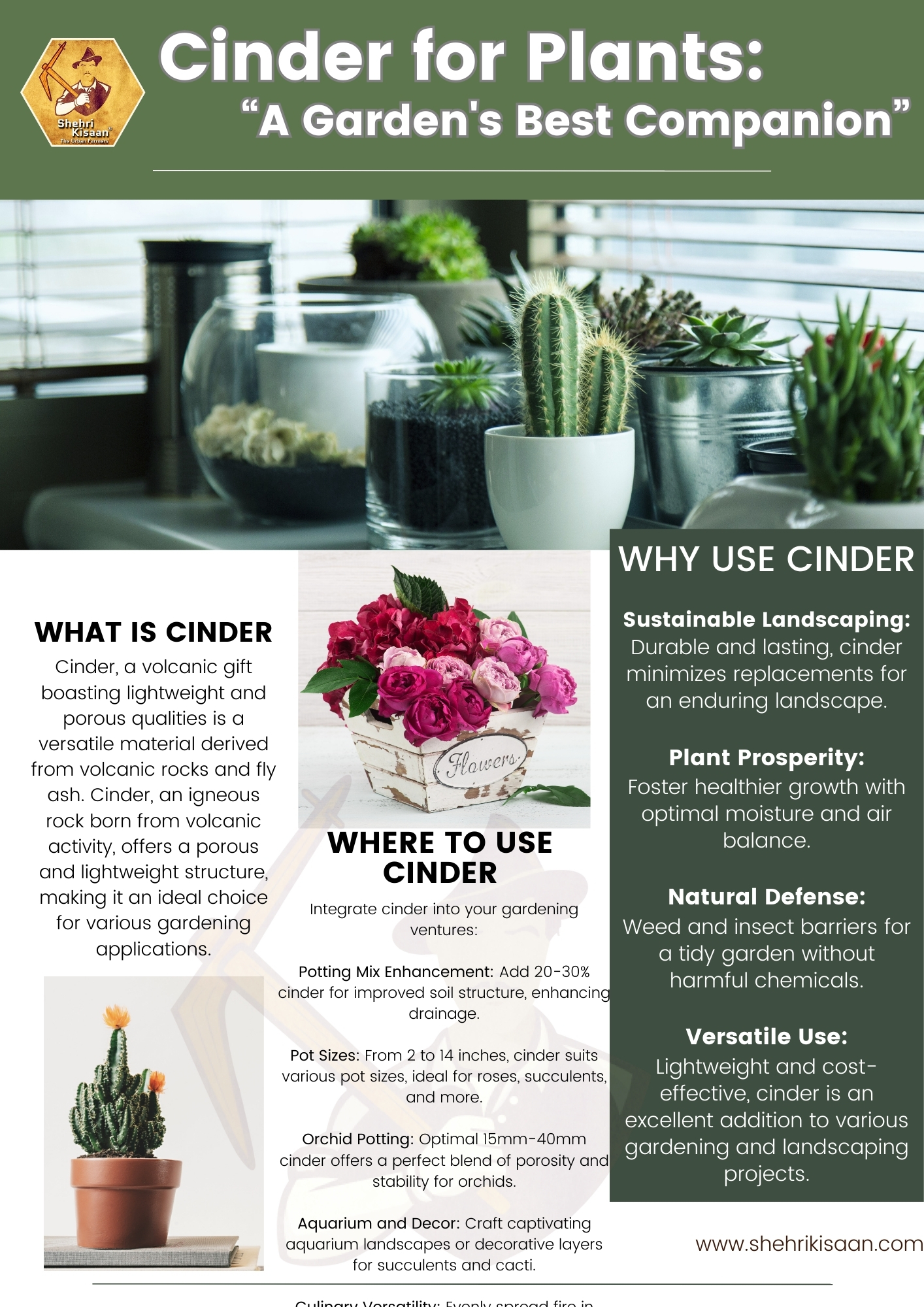

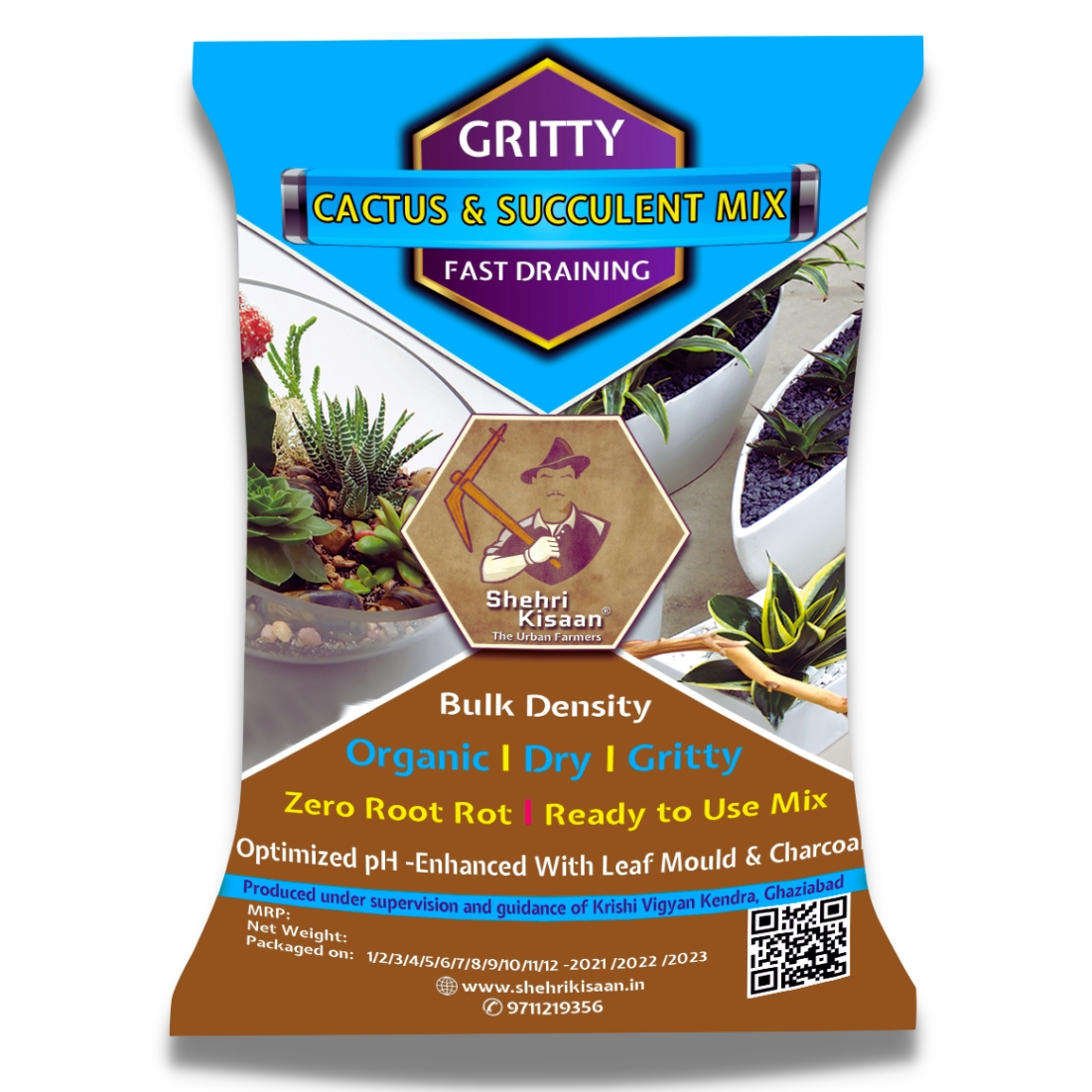



 Home
Home  Whishlist
Whishlist  Compare
Compare  Checkout
Checkout
Nupur –
Nicely washed, amazing quality. It was delivered on time, my Cactai are so happy and healthy now. Their team is so cooperative and helpful and made the size selection easy over a short WhatsApp chat .
Shivam agrahari –
The quality is really good. used it for succulents and the 6 to 10 mm size was perfect. mixed some leaf mould and neem khali and the results are awesome …. I used the same cinder for my bonsai as well….
Racheyata Shukla –
Used Half and 1 inch cinder rocks to place them in the bottom of the pot for drainage. This helps the retention of nutrients in the pot. Also created a top layer with the same size, just for look. The entire mix in the middle was prepared using 6 to10mm mixed with Shehrikisaan’s cow manure…